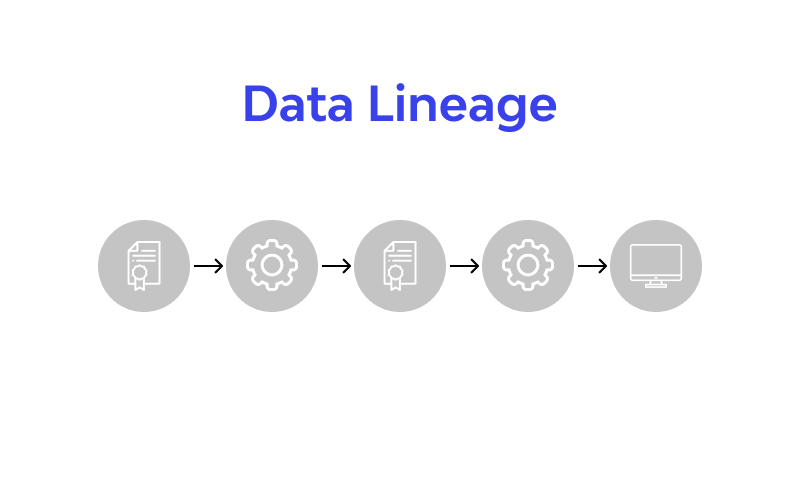Have you ever looked at a report and thought, “Where did these numbers even come from?” If yes, you’re not the only one. In most companies, data travels a lot. It can come from a form someone filled out, go into a database, and then land in a report or dashboard.
Now, the big question is, how do we know what happened to that data in between? That’s where the concept called data lineage comes in.
What Is Data Lineage?
Data lineage is a method of tracing the flow and modification of data within a company. It indicates the origin of the data, its transformations during its movement between systems, and its destination, such as a report or dashboard. This enables you to rely on your data, correct errors, and clarify the origin of numbers. Overall, data lineage is a map that can provide you with all the details of what happened to the data in your company. It is like a student’s report card.
Just as a final grade reflects all the work a student did, data lineage shows the full journey of data.
Two Main Types of Data Lineage
Data lineage has mainly two types. Refer below for detailed information.
Business view: This is for people who want to see how data moves across different teams or departments. It gives a bigger picture but skips the deep technical stuff.
Technical view: This one goes into more detail. It shows which files or databases your data passed through, what code touched it, and so on. This is usually for people working with data hands-on.
What Do Data Lineage Tools Do?
Data lineage will check your system and describe the path your data has taken.
It creates simple diagrams that show how data flows.
It helps you notice any changes made to the data. This helps in determining any mistakes easily.
It makes it easy to prove you are following data rules or policies.
It allows you to focus on a specific piece of data, if needed.
How Does Data Lineage Work?
Data is collected from a form, app, or device.
It moves through different systems or tools.
Along the way, it may be cleaned or changed.
Finally, it appears in reports or dashboards.
Where Can You Use Data Lineage?
There are many helpful ways to use data lineage in your day-to-day work:
You can fix mistakes in reports faster
You can clearly explain where numbers or charts came from
If your company has to follow rules about data usage, you can show proof with ease
If you’re planning a system update, you’ll know what will be affected
You can improve your data quality by seeing weak points
Basically, it makes life easier and helps you trust the data you’re working with.
Some Challenges You Might Face
Your data might live in too many places, making it tricky to track
Some data, like photos or emails, is harder to follow
Your company’s systems may keep changing, so you need to update the data flow often
It takes time to teach your team how to use lineage tools
How Do You Get Started With Data Lineage?
If you’re thinking, “Okay, this sounds useful, but how do I start?”—here’s a simple plan:
First, choose a tool that fits what your company needs.
Don’t try to do everything at once. Start with just one report or process what’s important. It’s easier to manage and helps you learn before tackling larger systems.
Use the tool to map how that data moves and changes. This helps you see the full flow and catch any issues early.
Show the results to your team so everyone understands.
Keep the map updated as things change.
What’s the Difference Between Data Lineage, Data Provenance, and Data Governance?
These words sound similar, but don’t worry, I’ll break them down.
Data lineage shows the full path and steps your data goes through.
Data provenance tells you about the origin or source of your data.
Data governance is the bigger system of rules, safety checks, and best practices to make sure your data is correct and secure.
Data Lineage and Data Governance: Are They the Same?
Not really. Data governance is the bigger picture. It’s about how your company handles data overall. Data lineage is just one part of the data management picture. It works alongside other practices like data governance, quality control, and metadata management to ensure reliable, secure, and accurate data. It helps you follow your company’s data rules by making the path of your data clear.
Wrapping It Up
In order to make it the simplest thing possible, data lineage assists you in tracing your data within the context of a delivery package. You are able to witness its beginning, what was done with it, and where it finally got to. This will enable you to correct errors, respond to inquiries, and be more comfortable with the data that you are relying on.
Related: What is White Label SEO: A Guide for Businesses
Related: What is IoT Analytics? Significance & Use Cases
The post What Is Data Lineage? Types, Tools, and How It Works appeared first on The Next Hint.

